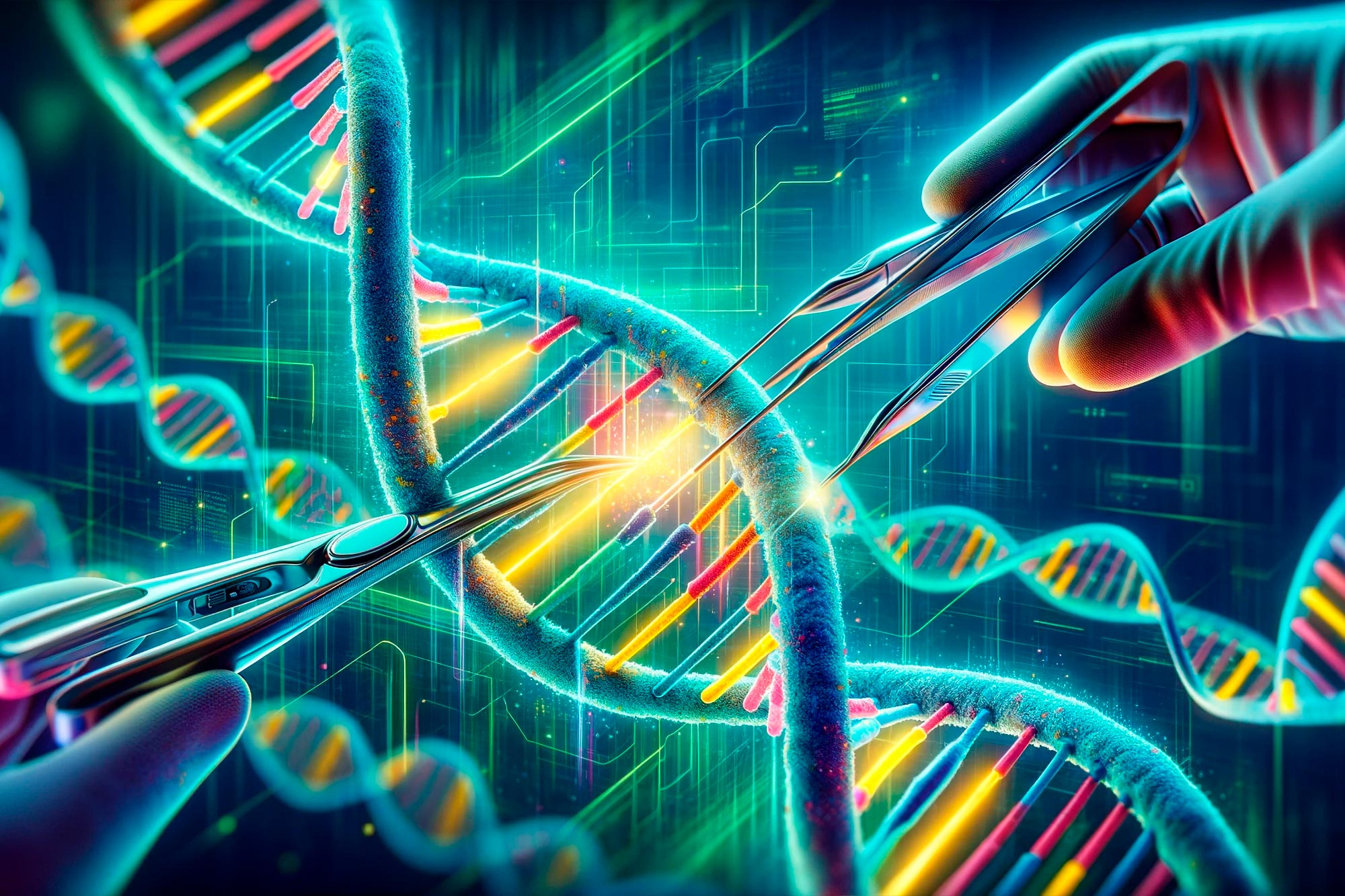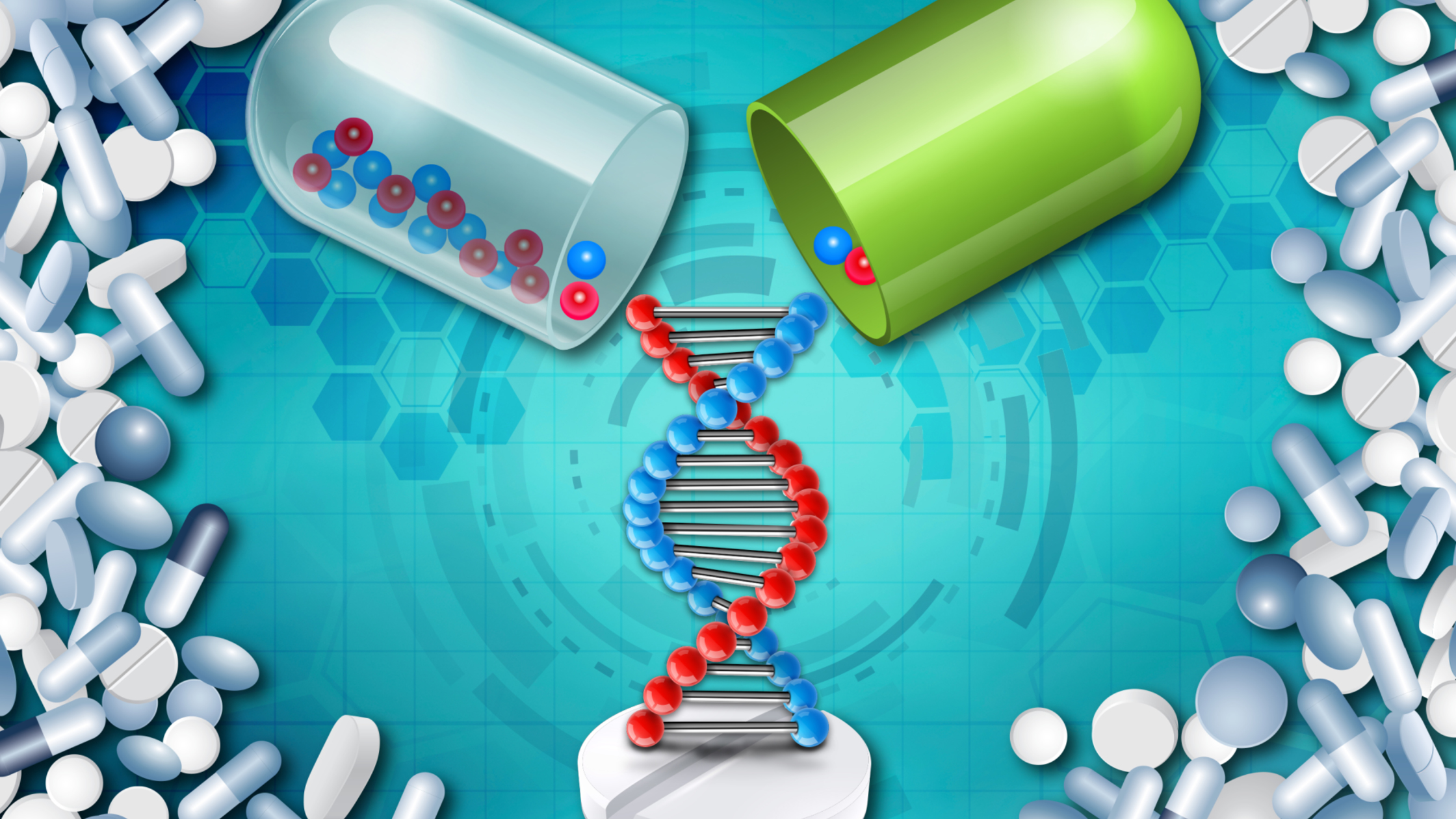Gene editing is revolutionizing the field of genetics, offering promising solutions to combat genetic diseases. Among the pioneering techniques in this area are base editing and prime editing, tools that enhance precision in altering genetic sequences. Spearheaded by innovators like David Liu, these advancements go beyond traditional methods like CRISPR, addressing the intricacies involved in correcting mutations that cause various ailments. The impact of gene editing is profound; it has the potential to rewrite genetic destinies and improve countless lives, as demonstrated by patients who have benefited from these innovative therapies. As research continues to flourish, the future of gene editing looks increasingly bright, promising to reshape our understanding of genetics and its applications in medicine.
At the forefront of medical innovation, genome modification represents a groundbreaking approach to treat and potentially cure hereditary disorders. Technologies such as nucleotide editing and genome targeting provide unprecedented accuracy, allowing researchers to rectify problematic sequences in DNA much like an editor would refine a manuscript. Pioneers in this field, particularly David Liu and his team, are developing new methodologies that surpass earlier gene-altering mechanisms, including the now-famous CRISPR technique. These advancements herald a new era where the manipulation of genetic material could eradicate some of the most challenging health issues faced by individuals worldwide. By unlocking the potential of these cutting-edge scientific pursuits, the realm of healthcare is poised for transformative progress.
The Pioneering Advances in Gene Editing
Gene editing has revolutionized modern medicine by offering unprecedented ways to modify genetic sequences, promising to change the trajectory for countless individuals afflicted with genetic diseases. The groundbreaking developments spearheaded by researchers like David Liu, especially in base editing and prime editing, have opened a new frontier where precision and safety in genetic modifications are no longer a distant dream. Base editing, in particular, allows for targeted alterations to the DNA sequence without causing double-strand breaks, minimizing the risk of potential off-target effects that were common with earlier CRISPR techniques.
In this evolving landscape of genetic therapies, the significance of basic research cannot be overstated. Liu’s work, which began from the fundamental understanding of CRISPR, illustrates how curiosity-driven investigation can lead to innovative solutions for complex challenges in medicine. As researchers continue to refine these technologies, the hope is to develop effective treatments for various genetic disorders, providing patients with a chance at healthier lives, and ultimately rewriting their genetic destinies.
Understanding Base Editing and Its Impact
Base editing represents a monumental step forward in genetic engineering, shifting the focus from traditional gene editing mechanisms to a more refined approach that modifies individual nucleotides. This technique empowers scientists to correct specific sequences associated with genetic diseases, making it a crucial tool in the battle against conditions like sickle cell anemia and muscular dystrophy. By changing a single base (A, T, C, or G) into another, researchers can rectify mutations that lead to severe health implications, reducing the need for more invasive procedures.
The implications extend beyond just correcting genetic errors; they also involve redefining our understanding of genetic disease progression. As clinical trials emerge, the success of base editing not only highlights its effectiveness but also sparks discussions about the ethics of gene therapy. Addressing concerns about safety and long-term effects is paramount as the scientific community navigates this new terrain. Liu’s emphasis on responsibility in ensuring the safety of these techniques resonates strongly in this dialogue.
The Role of Prime Editing in Genetic Medicine
Prime editing enhances the landscape of gene editing by addressing limitations that base editing and CRISPR face, particularly in cases involving larger genetic rearrangements. It functions akin to a word processor, executing precise edits that allow scientists to modify or remove mutations with remarkable accuracy. This technology could potentially serve as a remedy for a broader range of genetic disorders, from rare congenital diseases to more prevalent conditions, thereby expanding the horizon of genetic therapies available to patients.
Prime editing represents not just a technical advancement but also a shift in the mindset surrounding genetic interventions. By enabling the research community to efficiently create edits at the genomic level, it redefines our approach to treating diseases that were once considered untreatable. Moreover, it sparks conversations about the future of genetic medicine and the ethical considerations of making alterations at such fundamental biological levels, all while keeping patient safety and efficacy at the forefront.
CRISPR: The Foundation of Modern Gene Editing
CRISPR technology laid the groundwork for the next generation of gene editing methods. Initially discovered as a bacterial defense mechanism against viruses, CRISPR quickly transitioned into a powerful tool for scientists eager to manipulate genomes across various organisms. David Liu’s acknowledgment of the role that fundamental research played in realizing the potential of CRISPR underscores how seemingly unrelated scientific inquiries can yield revolutionary technologies that challenge our understanding of genetics.
Understanding the intricacies of the immune system in bacteria has not only enhanced our knowledge of virology but has also driven innovative applications in human health. The versatility of CRISPR has inspired a multitude of applications, from agriculture to gene therapy, allowing researchers to approach challenges in genetic engineering with greater creativity. Liu’s insights reveal that the road from CRISPR discovery to its practical applications exemplifies the unexpected journey of basic science toward transformative impact.
Addressing Genetic Disorders Through Innovative Therapies
Innovative therapies such as base editing and prime editing hold the potential to tackle an extensive array of genetic disorders that have historically posed significant challenges to medical science. With hundreds of millions impacted by various genetic diseases, the urgency for effective treatments has never been higher. The progress made in clinical trials is a testament to the dedication of researchers like David Liu, who tirelessly work to refine gene editing technologies and bring hope to those affected.
The reliance on both established methods like CRISPR and novel techniques emphasizes the collaborative nature of scientific research. By fostering an environment that encourages innovation, the scientific community can pursue comprehensive solutions to the complex mechanisms underlying genetic diseases. Liu’s work reflects a commitment to not only advancing medical technology but also preparing the groundwork for future breakthroughs that could herald a new era in genetic medicine.
The Future of Gene Editing and Ethical Considerations
As gene editing technologies evolve, ethical considerations become increasingly critical in guiding research and clinical applications. With capabilities to alter the human genome, there’s inherent responsibility to ensure that such interventions are conducted safely and ethically. David Liu’s cautions about the ramifications of gene therapy highlight the necessity for thorough scrutiny and regulation as these powerful tools become part of routine medical care.
Discussions surrounding gene editing must encompass not only the scientific advancements but also societal implications, including access to therapies, potential misuse, and long-term consequences on human genetics. By engaging in open dialogue with stakeholders—from patients and healthcare providers to ethicists and policymakers—the field of gene editing can navigate these complex waters, ensuring that innovative technologies serve humanity’s best interests without compromising ethical standards.
Clinical Trials: The Bridge Between Research and Application
Clinical trials serve as the crucial bridge between groundbreaking research and the application of gene editing therapies in real-world medical settings. Liu’s work has catalyzed several trials showcasing the potential of base and prime editing to alter genetic conditions that were once deemed incurable. As more patients participate in these trials, the data gathered provide invaluable insights into the effectiveness and safety of these novel treatments, paving the way for their eventual approval and widespread use.
The success stories emerging from these trials exemplify the promise of genetic research and the hope that new technology can bring to patients afflicted by debilitating disorders. Each trial not only informs the scientific community about the viability of these editing techniques but also serves as a source of hope for families impacted by genetic diseases. Liu’s commitment to advancing clinical applications ensures that the fruits of laboratory research translate into meaningful changes in patient care.
The Intersection of Science, Collaboration, and Innovation
The nexus of science, collaboration, and innovation is evident in the advancements of gene editing technologies, as demonstrated by researchers like David Liu. Collaborative efforts across institutions, such as the Broad Institute and Harvard, exemplify how pooling expertise and resources leads to breakthroughs that push the boundaries of what is medically possible. By embracing interdisciplinary approaches, scientists can tackle complex challenges in genetics and develop more effective therapies.
Moreover, the synergy between academic research and federal support has proven instrumental in driving progress in genetic medicine. Liu’s work, supported by institutions like the NIH, highlights the importance of ongoing investment in basic research, which often leads to revolutionary applications in healthcare. Maintaining strong partnerships between academia and government entities is critical for fostering innovation and addressing the rising challenges of genetic diseases.
David Liu: A Leading Figure in Gene Editing Technology
As a pioneering figure in the realm of gene editing technology, David Liu’s contributions have significantly advanced our understanding and application of genetic engineering. His innovative work in base editing and prime editing not only showcases his deep scientific insight but also underscores the potential to redefine disease treatment and prevention strategies. Liu’s role as a leader in this field inspires future generations of researchers to pursue advancements that could one day eliminate genetic diseases.
Liu’s vision extends beyond the laboratory; he actively engages with the broader scientific community, advocating for responsible practices and the ethical ramifications of gene editing. By stressing the importance of safety in clinical applications, Liu emphasizes that the future of gene editing should reflect a commitment to improving lives while being grounded in ethical responsibility. His contributions and leadership demonstrate the crucial intersection of innovative science and compassionate healthcare.
Frequently Asked Questions
What is gene editing and how does it relate to genetic diseases?
Gene editing is a revolutionary technology that allows scientists to modify an organism’s DNA, making precise changes that can potentially correct genetic diseases. Techniques such as CRISPR, developed from bacterial defense mechanisms, have enabled researchers to target specific genes associated with various genetic disorders. The advancement includes newer methods like base editing and prime editing, which aim to provide safer and more effective solutions for correcting mutations that cause genetic diseases.
How does base editing work in gene editing?
Base editing is a cutting-edge gene editing technology that allows for the alteration of specific nucleotide bases in DNA without causing double-strand breaks. Developed by David Liu and his team, this method enables the conversion of one base into another — for example, changing a C to a T — thereby targeting four of the most common mutations linked to genetic diseases. This approach is particularly valuable because it minimizes the risks associated with traditional gene editing techniques.
What is prime editing and how does it improve upon CRISPR?
Prime editing is an innovative gene editing technique that enhances the capabilities of CRISPR by allowing precise insertions, deletions, and substitutions of DNA sequences. Unlike CRISPR’s cutting method, which can disrupt entire sections of DNA, prime editing acts like a word processor to find and replace specific sequences, making it ideal for addressing mutations that contribute to genetic diseases. This advancement represents a significant leap forward in the safety and effectiveness of gene therapy.
Who is David Liu and what is his contribution to gene editing?
David Liu is a prominent scientist and professor at Harvard University, recognized for his pioneering contributions to gene editing technologies, including base editing and prime editing. His work has significantly advanced the understanding of gene modification and its potential to treat genetic diseases, as seen in various clinical trials. Liu’s commitment to ensuring that these techniques are safe and effective for patients is a defining aspect of his research ethos.
What role does CRISPR play in gene editing?
CRISPR is a revolutionary gene editing technology derived from the immune systems of bacteria, enabling precise modifications of DNA. It acts like molecular scissors that cut the DNA at specific locations, allowing for gene disruption or deletion. While CRISPR has been a game-changer in genetic research and therapy, it has limitations in correcting genetic diseases, prompting the development of more refined techniques like base editing and prime editing for better accuracy.
What are the implications of gene editing for the future of medicine?
Gene editing holds transformative potential for the future of medicine, offering prospects for treating and possibly curing a wide array of genetic diseases. By correcting mutations at the DNA level, technologies like base editing and prime editing can provide long-term solutions for patients, reducing reliance on ongoing treatments. However, the ethical and safety considerations surrounding these technologies remain critical as they evolve and enter clinical applications.
How do clinical trials using base editing and prime editing work?
Clinical trials involving base editing and prime editing assess the safety and efficacy of these gene editing techniques in treating various genetic diseases. These trials typically involve patients receiving targeted therapies that utilize these advanced technologies to correct genetic mutations. Researchers monitor patient outcomes, side effects, and long-term effects to evaluate the success of the treatments and further refine the approaches.
Can gene editing cure genetic diseases?
While gene editing technologies like base editing and prime editing show great promise in correcting genetic mutations, scientists are cautious in labeling them as cures. The term ‘cure’ implies long-term absence of disease symptoms; however, ongoing clinical trials indicate that some patients have experienced significant improvements or remission. Continued research is essential to establish long-term safety and efficacy before definitive claims of cures can be made.
| Key Point | Details |
|---|---|
| Introduction of Gene Editing | Gene editing has emerged as a revolutionary approach to treat genetic diseases, exemplified by base editing and prime editing. |
| Base Editing Technology | It allows for precise changes to DNA bases without cutting the entire double helix. This method can correct common mutations associated with genetic diseases. |
| Prime Editing Technology | Similar to a word processor, it can find and replace specific sections of DNA, targeting a wider array of genetic mutations. |
| First Successful Case | Alyssa Tapley was the first patient treated with base editing successfully, leading to a significant improvement in her health. |
| Current Research and Trials | As of now, there are at least 18 clinical trials using these gene-editing technologies with several patients showing promising results. |
| Importance of Basic Science | The discoveries leading to CRISPR and subsequent technologies stemmed from basic scientific research, emphasizing its significance in biomedical advancements. |
| Future Concerns | David Liu expresses concerns about the future of research collaboration due to current challenges facing young scientists. |
Summary
Gene editing represents a groundbreaking advancement in the treatment of genetic diseases, as demonstrated by innovations such as base editing and prime editing. These technologies have shown their potential in clinical trials, revolutionizing how we approach genetic disorders. The success story of Alyssa Tapley highlights the life-changing impact of these therapies, illuminating the path for future innovations in gene editing.



